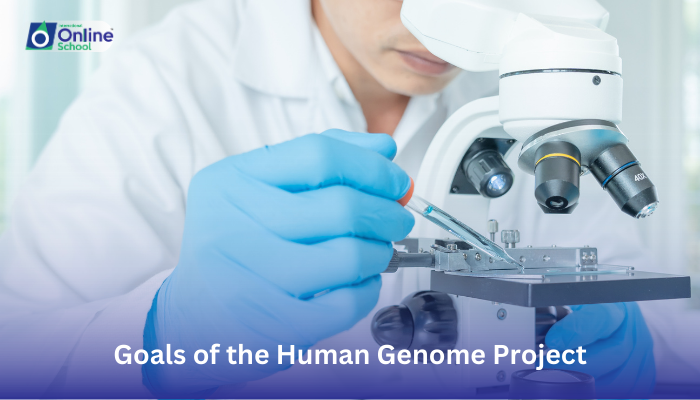
Learning Outcomes:
i. Explain the primary goals of the Human Genome Project, emphasizing its focus on mapping and sequencing the entire human genome.
ii. Discuss the specific objectives of the project, including physical and genetic mapping, identifying genes, and understanding their functions.
iii. Appreciate the significance of these goals in advancing our understanding of human health, disease, and evolution.
Introduction:
Imagine holding a treasure map, not to buried gold or hidden islands, but to the secrets of life itself – the human genome. The Human Genome Project (HGP) was a monumental quest to decipher this map, to unravel the complete set of instructions that make us who we are. Today, we delve into the ambitious goals of this project, understanding why mapping and sequencing our DNA was such a groundbreaking undertaking.
i. The Grand Map: Charting the Genomic Landscape:
One of the HGP's primary goals was to create a detailed physical map of the human genome. Think of this as tracing the outline of the map, identifying the locations of chromosomes and their respective sizes.
Physical mapping involved cutting and ordering the vast stretches of DNA, akin to piecing together a giant puzzle. This map provides a framework for further exploration and analysis.
ii. The Code Revealed: Sequencing the Genetic Alphabet:
Another crucial goal was to determine the exact sequence of the four chemical bases (adenine, guanine, cytosine, and thymine) that make up our DNA, the genetic alphabet. Imagine deciphering the cryptic language written on the map, uncovering the instructions encoded within our genes. DNA sequencing methods, like Sanger sequencing, allowed scientists to read the genetic code letter by letter, revealing the precise order of bases within each gene.
iii. A Library of Instructions: Identifying and Functioning of Genes:
With the map drawn and the code deciphered, the HGP aimed to identify and characterize all the genes within the human genome. Think of this as pinpointing each individual instruction on the map, understanding its purpose and role in our biological processes. By analyzing the DNA sequence and comparing it with other organisms, scientists identified tens of thousands of genes, each with specific functions ranging from building proteins to regulating development and disease susceptibility.
iv. Beyond the Map: Understanding and Utilizing Genomic Knowledge:
The HGP's goals were not limited to mere mapping and sequencing. The ultimate aim was to understand how genes function, how they interact with each other, and how they influence our health, disease susceptibility, and even evolution. This knowledge has opened doors to various applications:
Personalized medicine: Tailoring treatment plans based on individual genetic makeup.
Disease diagnosis and prediction: Identifying genetic risk factors for diseases and developing preventative strategies.
Gene therapy: Replacing faulty genes with healthy ones to treat genetic disorders.
Understanding evolution: Studying how genes change over time and contribute to the diversity of life.
The Human Genome Project's goals, ambitious as they were, have revolutionized our understanding of the human blueprint. By mapping and sequencing our DNA, we have unlocked a treasure trove of information that holds immense potential for improving human health, combating diseases, and understanding our place in the grand tapestry of life. As we continue to explore and utilize this genomic knowledge, the future holds exciting possibilities for a healthier and more fulfilling human experience.